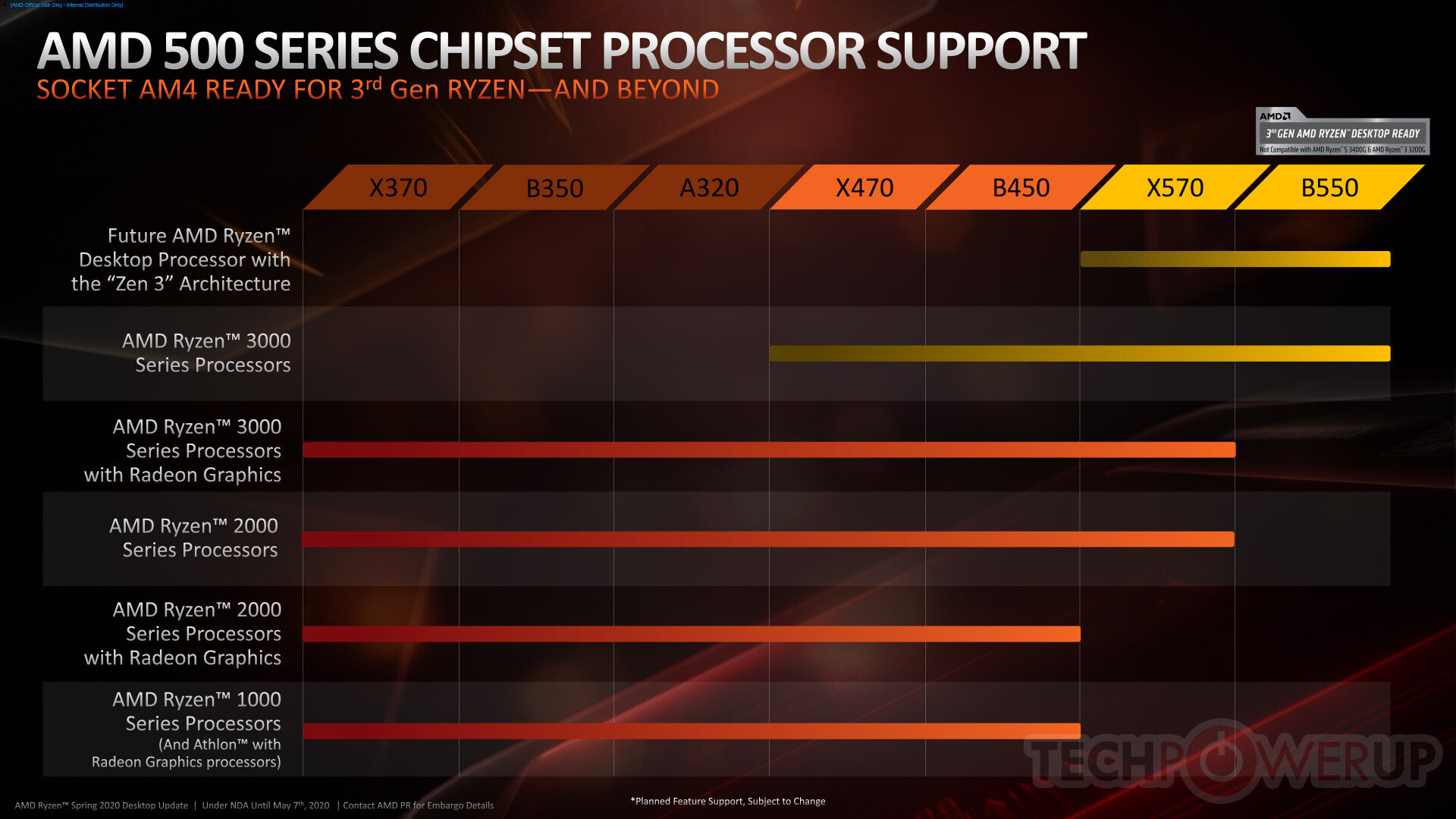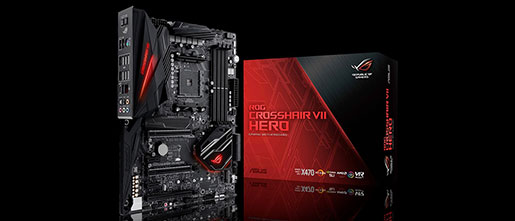VideoCardz shares alleged CPU shots of Intel's future Rocket Lake and Alder Lake chips.
Intel Rocket Lake, Alder Lake CPU Photos Leaked Online : Read more
Intel Rocket Lake, Alder Lake CPU Photos Leaked Online : Read more
Big little is only usable in mobile and not desktop . Intel should have gone three or four threads per core instead of this ,
Seems perfectly fine to me: most programs have a handful of threads that require high performance and dozens of others that just do background or otherwise non-performance-critical stuff, so it makes sense to have some more power-efficient cores to take care of those and leave the high-performance cores unencumbered by low-priority tasks. The game I play most is WoW and ~90% of its CPU usage comes from three of its 30ish threads.Big little is only usable in mobile and not desktop.
Weird phrasing by the article. Alder Lake has never been rumored to launch in the 1st half of 2021. According to Intel, the platform will support DDR5 and PCIE5 which means it was never going to get released H1 of 2021. It will likely be late in 2021 to early 2022 when it is released."Slated for a first quarter release in 2021, Rocket Lake leverages the Cypress Cove microarchitecture, and Intel has already touted an instruction per cycle (IPC) gain up to double digits. ... While an exact timeframe is unknown, it's plausible that Alder Lake won't touch down until the second half of 2021. ... It's evident from the Alder Lake photograph that the processor will require a new socket."
So a very late Q1'21 launch for RL followed by a potential Q2'21 launch of AL on a new socket. Yeah right, that is s-o-o-o-o-o-o-o-o-o-o going to happen. In other words, it is very plausible that you don't have an bleeping clue. There is an Easter Bunny.
Intel has been doing 2 generations per socket for over a decade. It's not news, and not likely to change. Just because a CPU can be dropped into a socket doesn't mean it will work. As seen in the chart below there is not AM4 chipset that supports all 4 generations of Ryzen CPU's. The most any chipset supports is 3, with the B550 only supporting 2, just like Intel.So, in summary, two generations on LGA1200 and who knows how many generations on LGA1700 other than at least one. Meanwhile, AMD will have had four generations on AM4. Looks to me like someone told Intel to kill itself in the desktop space and that Intel is determined to do so. BTW who the heck does LGA1150, LGA1151, LDA1155 and LGA1156 anyways, four sockets for a total difference of six pins. Now you know why Intel continues to makes so much money ... dittoheads who have just enough money for annual CPU/MB upgrades. Oh look. I'm still on a 22nm Haswell as I decided to wait until 10mn arrived on the Intel desktop. Bought an AMD 3700X in the meantime.


LGA1156 is the only mainstream Intel socket from the last ~25 years to have supported only one CPU generation instead of two. Unless Intel makes a significant design mistake with LGA1700, it is practically guaranteed to be two generations as usual.So, in summary, two generations on LGA1200 and who knows how many generations on LGA1700 other than at least one.
LGA1156 is the only mainstream Intel socket from the last ~25 years to have supported only one CPU generation instead of two. Unless Intel makes a significant design mistake with LGA1700, it is practically guaranteed to be two generations as usual.
Seems perfectly fine to me: most programs have a handful of threads that require high performance and dozens of others that just do background or otherwise non-performance-critical stuff, so it makes sense to have some more power-efficient cores to take care of those and leave the high-performance cores unencumbered by low-priority tasks. The game I play most is WoW and ~90% of its CPU usage comes from three of its 30ish threads.
You also have all of Windows' background processes, all of your Chrome/Firefox/Edge/Opera/whatever tabs, all of your own background stuff and opened applications, etc. that could use low-power cores to leave performance cores available for games or whatever the foreground process is and its dependencies.
Have to disagree. Intel stated the Lakefield small cores were more performant than multi-threading. In addition, Gracemont add avx2, and simd operations are normally not as performant in combination with multi-threading ... so the Gracemont simd contribution may be a nice win.
For most consumer and office software, single-threaded performance is paramount to good user experience. Having more threads sharing a single core's execution resources hinders single-threaded performance, which is why lightly threaded games usually perform worse with SMT enabled when there are more than enough cores to afford disabling SMT.Why not go more threads per core instead of adding up heat and size from lower cores ?
I still think that moving to more threads per core is the better option.
"Slated for a first quarter release in 2021, Rocket Lake leverages the Cypress Cove microarchitecture, and Intel has already touted an instruction per cycle (IPC) gain up to double digits. ... While an exact timeframe is unknown, it's plausible that Alder Lake won't touch down until the second half of 2021. ... It's evident from the Alder Lake photograph that the processor will require a new socket."
So a very late Q1'21 launch for RL followed by a potential Q2'21 launch of AL on a new socket. Yeah right, that is s-o-o-o-o-o-o-o-o-o-o going to happen. In other words, it is very plausible that you don't have an bleeping clue. There is an Easter Bunny.
blah
Actually makes sense if you think about the situation Intel is in.
you need to put in mind that the size and more power used for the little cores can be used to add one or two more of the Big core , add to it more threads thats for sure a better gain , because once you need more bigger cores for your apps the lower ones will not be used . unlike when all are big cores with multi thread
This basically helps them stay relevant with Alder Lake and Tiger Lake, but tread water using enhanced architecture 14nm products too.
"Rocket Lake might finally bring PCIe 4.0 support to Intel's desktop platform..."
I think pcie4 has been confirmed by an Intel spokesperson already, so why the "might".
Alder Lake "might" be bringing pcie5 to a desktop platform before AMD, based on the leaks in notebookcheck.
When might AMD "finally bring" pcie4 to a laptop platform?
Laptops can stay on PCie 3.0 for now. Why do you want less battery life and more power consumption to support PCIe 4.0 in a laptop?
One PCIe 4.0 lane uses less power and die area than two 3.0 ones. Intel may also have more power-efficient PCIe 4.0 PHY/MAC designs than AMD's - Intel has been doing high speed networking for a long time, developed high-speed transceivers for Thunderbolt for a while, acquired a portfolio of multi-gigabit transceivers by buying out Altera and probably a few others. Xilinx which AMD is currently in the process of acquiring likely has better PCIe 4.0/5.0 designs than AMD/TSMC too.Laptops can stay on PCie 3.0 for now. Why do you want less battery life and more power consumption to support PCIe 4.0 in a laptop?


